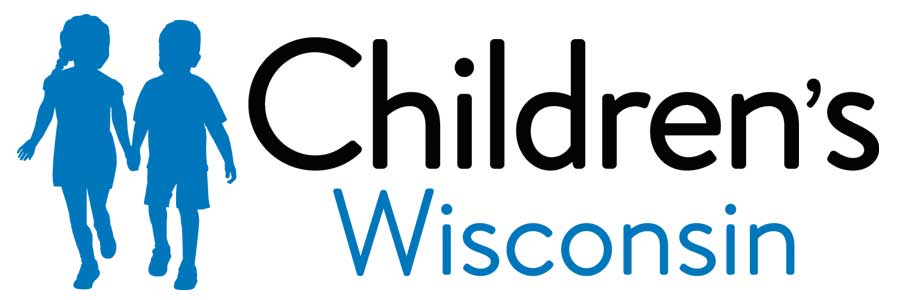Your child at 3 to 4 years of age (1748)
Key points below
What should my child be learning?
Gross Motor Skills: Big Body Movements• Jumps forward.
• Walks on a line with hands on hips without losing balance. Starts with one foot then 2 feet on the line.
• Stands on 1 foot with hand on hips and counts to 3-5 without losing balance.
• Throws a tennis ball with overhand throw.
• Hits a target on a wall with a tennis ball with an underhand throw.
• Catches a playground ball.
• Runs fast for 50 feet.
• Rides a tricycle.
• Climbs stairs 1 foot on each step. Starts to not use the rail or the wall for balance
Fine motor skills: Play and Self Help
• Buttons and unbuttons large buttons on clothing.
• Puts on most clothing except shirt and jacket.
• Eats with a fork and a spoon.
• Holds a crayon or pencil like a grownup.
• Uses scissors to cut paper in half and starts to cut along a straight line.
• Draws a circle on their own, copies a plus sign (+) and draws a square.
• Builds a tower 9 or 10 blocks tall with small blocks.
Language and Social Skills
• Understands words for some colors like red, blue and green.
• Understands and matches shapes, like a circle, rectangle, and square.
• Understands words for family, like brother, grandma, aunt and sister.
• Hears and answers when you call from another room.
• Talks about things that happened during the day at home, at school or at daycare.
• Uses 4 or more words in sentences.
• Uses longer sentences to describe events or items.
• Answers simple ‘WH’ questions like “who?”, “what?” and “where?”
• Asks when and how questions.
• Says rhyming words like hat, cat and bat.
• Follows simple 1 and 2 step instructions at home and school. For example: “put your coat and shoes on; turn off the light and go to bed.”
• Safely eats different kinds of food.
• Can keep hands to self and have periods of 10 or more minutes where they can sit still.
• Other people can usually understand your child’s speech.
How can I help my child?
Gross Motor Skills:• Practice jumping like a kangaroo, bunny, frog, and other animals. Make a game of hopping between lines. How far can you jump, how many times can you hop on 1 or 2 feet?
• Walk on lines of a tennis or basketball court, the edge of the sandbox, etc.
• Practice standing on 1 foot. Who can hold their balance the longest? How long can you stand like a flamingo at the zoo?
• Practice jumping off a step or stool.
• Have running races with a start and stop point.
• Make an obstacle course to practice crawling over and under, jumping over, walking or crawling around objects.
Fine Motor Skills:
• Play dress up with shoes, clothes, hats.
• Use playdough® to make balls, “cookies”, snakes-cut, snip and shape dough with plastic or dull scissor, plastic pizza cutter, plastic knife, cookie cutters.
• Build with large linking blocks like LEGO®’s, Duplos®, Megablocks®.
• Paint using different brushes like Q-tips, sponges, foam brushes or finger-paint with water. Use paper, pavement, walls or chalkboards.
• Print the capital letters of the alphabet and child’s first name using crayons, markers, or pencils. Have your child draw faces with hair, eyes, nose, and mouth.
• Let your child help in the kitchen with stirring, measuring, and pouring. It will be messy!
Language and Social Skills:
• Read books 10 minutes each day. Ask questions about the story. Have your child act out or tell you about the story.
• Have your child play with toys or books for 8 to 10 minutes on their own.
• Help your child think of questions about what is happening in pictures, books, magazines, family photos and when you are out in the community. Use questions that begin with “why”. Cut out pictures and tape or glue them on paper and make up a story.
• Act out playing house, driving a car, going to the doctor, going to the store, going to work, cooking, and doing what caregivers are doing.
• Teach counting, rhyming, humming and singing.
• Sing music with actions. Try songs like twinkle, twinkle little star, row row row your boat, and wheels on the bus.
What can I do to help my child develop?
• Limit electronics and screen time to 60 minutes or 1 hour per day. This includes tv, phone, and computer.• Do some movement and play every day. Visit a playground to explore, swing, climb, slide, balance chase and run.
• Have a daily routine and schedule, like bedtime routine, meal time routine, and story time.
• Give praise and be patient.
• Play with your child for at least 10 minutes each day. Let the child pick the activity for those 10 minutes. It will show that you care about your child and want to spend time with them.
Toys to have for your Child between 3 to 4 years
• Safety scissors, playdough® scissors, crayons, art supplies, easel, markers, tape and glue• Different shapes and sizes of balls for catching, kicking, throwing at a target or hoop.
• Linking blocks-megablocks®, duplos®, legos®, lacing cards.
• Books like board books and starter books.
• 12 to 15 piece wooden puzzles that have trucks, letters, shapes, or animals.
• Dress-up clothing, play kitchen, play workbench.
• Candyland, Chutes and Ladders, Matching games, Memory games, Mr. Potato Head
• Tricycle or balance bike and a helmet.
